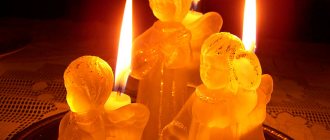Every person knows about depression, having experienced this condition on themselves, observing it in loved ones or reading numerous articles about it in the media.
But much fewer people are aware of dysthymia, although it is its younger sister - chronic minor depression, that is, a mild form. With her, unlike the “oldest” one, it is quite possible to live a normal, full life for many years, to be active. This is just bad: neither the patient nor the doctor shows signs of the disease. And this is very dangerous. The fact is that dysthymia is more dangerous for the nervous system than depression. It can paralyze mental and mental activity. In addition, it may be a component of bipolar disorder.
Previously, this disease was called neurasthenia and psychasthenia. The concept of “dysthymia” was introduced by American psychotherapist Robert Spitzer. But this term was intended to replace the names of other mental disorders - neurotic depression or depressive neurosis.
A mild form of depression appears in children (family influence) and adolescents (difficulties during the school period). It does not bypass people over 18 years of age – about 20 percent of them. Women are especially susceptible to it (due to hormonal changes).
You need to understand that the concept of “chronic disease” in relation to dystonia does not mean that it is impossible to get rid of it. In psychiatry it is a little different: it means that its course is very protracted.
Symptoms
A person suffering from dysthymia is constantly depressed, as observers say, he has lost heart. Moreover, there are no reasons for such “universal” sadness; on the contrary, everything is fine, but joy is not felt at all.
In such an adult:
- trouble sleeping – can’t fall asleep or sleeps too much;
- low activity, lack of energy;
- low self-esteem, lack of self-confidence;
- impaired concentration;
- increased anxiety;
- feeling depressed;
- frequent somatic diseases;
- panic attacks;
- pessimism;
- inability and unwillingness to do something, to overcome simple difficulties;
- guilt;
- eating disorder - either starving or overeating;
- feeling of hopelessness.
The dystimic does not want to communicate with anyone, avoids social relationships, and tries to drown out depression with psychotropic substances and alcohol.
Signs of dysthymia in children:
- poor performance at school;
- social skills are underdeveloped;
- manifestation of irritability;
- depression.
Once again: it is common for any person from time to time, during difficult life situations, to be sad, feel melancholy, and consider himself unhappy. But if such a condition drags on, reduces the quality of life, and does not change for the better when “the clouds have cleared,” then this is already a pathology.
Links[edit]
- "Persistent Depressive Disorder: MedlinePlus Medical Encyclopedia". NLM
. Retrieved May 8, 2021. - ^ abcd "Depression". NIMG
. May 2021. Archived from the original on August 5, 2021. Retrieved July 31, 2016. - ^ abc American Psychiatric Association (2013). Diagnostic and Statistical Manual of Mental Disorders, Fifth Edition. Washington, DC: American Psychiatric Publishing. ISBN 978-0-89042-554-1.
- GBD 2015 Incidence and Injury Incidence and Prevalence, co-authors. (October 8, 2021). "Global, regional and national incidence, prevalence, and years lived with disability for 310 diseases and injuries, 1990–2015: a systematic analysis for the Global Burden of Disease Study 2015". Lancet
.
388
(10053):1545–1602. DOI: 10.1016/S0140-6736(16)31678-6. PMC 5055577. PMID 27733282. - Gilbert, Daniel T.; Schacter, Daniel L.; Wegner, Daniel M., ed. (2011). Psychology (2nd ed.). New York: Worth Publishing. P. 564. ISBN 978-1-4292-3719-2.
- "Dysthymic disorder". BehaveNet. Retrieved June 23, 2013.
- ↑
Brody, Jane (January 30, 1995).
“Help awaits those who live in sadness.” News-magazine
. Daytona Beach, Florida paragraph 54. - ^ abc "Dysthymia". Harvard Health Publications
. Harvard University. February 2005. Archived from the original (February 2005 edition of the Harvard Mental Health Letter) on January 6, 2010. Retrieved December 12, 2009. - John M. Grohol, Psy.D. (May 18, 2013). "DSM-5 Changes: Depression and Depressive Disorders". Psych Central. Retrieved December 2, 2013.
- Niculescu, AB; Akiskal, H. S. (2001). "Proposed endophenotypes of dysthymia: evolutionary, clinical, and pharmacogenomic considerations". Molecular Psychiatry
.
6
(4): 363–366. DOI: 10.1038/sj.mp.4000906. PMID 11443518. - ^ abcdef Sanson, Maryland; Sanson, Los Angeles, MD (2009). "Dysthymic disorder: abandoned and forgotten?" . Psychiatry
.
6
(5): 46–50. PMC 2719439. PMID 19724735. - Baldwin, Raj S.; Thomas, S. (1995). "Dysthymia: pharmacotherapy options." Practical therapy
.
4
(6): 422 to 430. DOI: 10.2165/00023210-199504060-00005. - ^ abc "Double depression: a key component of mood disorder hopelessness". Science Daily
. July 26, 2007 Archived from the original on September 7, 2008. Retrieved July 17, 2008. - Klein, D.N.; Shankman, S. A.; Rose, S (2006). "A 10-year prospective follow-up study of the natural history of dysthymic disorder and double depression." American Journal of Psychiatry
.
163
(5):872–80. DOI: 10.1176/appi.ajp.163.5.872. PMID 16648329. - ^ abc Double depression: definition, symptoms, treatment and more. Webmd.com (01/07/2012). Retrieved July 1, 2012.
- Lyoo, I. K., Kwon, J. S., Lee, S. J., Hann, M. H., Chang, K., Seo, Lee, S. I., & Renshaw, P. F. (2002). "Reduction of the genus of the corpus callosum in naïve treatment, early-onset dysthymia, and depressive personality disorder." Biological Psychiatry
.
52
(12):1134–1143. DOI: 10.1016/S0006-3223(02)01436-1. PMID 12488058. S2CID 25677987. CS1 maint: multiple names: list of authors (link) - Ravindran, A. Smith, A. Cameron, K., Bhatal, R. Cameron, I., Georgeska, T. M., Hogan, M. J. (2009). "Towards a functional neuroanatomy of dysthymia: a functional magnetic resonance imaging study". Journal of Affective Disorders
.
119
(1–3): 9–15. DOI: 10.1016/j.jad.2009.03.009. PMID 19351572. CS1 maint: multiple names: list of authors (link) - Casement, Maryland; Shestyuk, A.Yu.; Best, J. L.; Casas, B. R.; Glaser, A.; Segundo, Massachusetts; Deldin, P.J. (2008). "Affect expectancy in dysthymia: Behavioral and neurophysiological measures". Biological Psychiatry
.
77
(2):197–204. DOI: 10.1016/j.biopsycho.2007.10.007. PMC 2709790. PMID 18063468. - Edwardsen, J.; Torgersen, S.; Roysamb, E.; Lygren, S.; Skre, I.; Onstad, S.; & Oyen, A. (2009). "Unipolar depressive disorders share a common genotype." Journal of Affective Disorders
.
117
(1–2): 30–41. DOI: 10.1016/j.jad.2008.12.004. PMID 19167093. - Schacter, Gilbert, Wegner (2011). Psychology (2nd ed.). Costs. P. 631 .CS1 maint: several names: list of authors (link)
- J. Griffiths; A. V. Ravindran; Z Merali; H. Anisman (2000). "Dysthymia: a review of pharmacological and behavioral factors". Molecular Psychiatry
.
5
(3): 242–261. DOI: 10.1038/sj.mp.4000697. PMID 10889527. - ^ ab American Psychiatric Association, ed. (June 2000). Diagnostic and statistical manual of mental disorders DSM-IV-TR (4th ed.). American Psychiatric Publishing House. ISBN 978-0-89042-024-9. Archived from the original on 2008-05-17.
- Turner, Samuel M.; Hersen, Michel; Beidel, Deborah K., ed. (2007). Psychopathology and diagnosis of adults
(5th ed.). Hoboken, NJ: John Wiley. ISBN 978-0-471-74584-6. OCLC 427516745. - 300.4, ICD9, accessed May 2, 2009.
- "Persistent depressive disorder (dysthymia)". Mayo Clinic. December 2021. Retrieved May 10, 2021.
- Bellino, S.; Patria, L.; Ziero, S.; Rocca, G.; Boghetto, F. (2001). "Clinical features of dysthymia and age: a clinical study." Review of Psychiatry
.
103
(2–3): 219–228. DOI: 10.1016/S0165-1781(01)00274-8. PMID 11549409. S2CID 2502577. - Jump up
↑ Goodman, S. H., Schwab-Stone, M., Lahey, B. B., Shaffer, D., and Jensen, P. S. (2000).
"Major depression and dysthymia in children and adolescents: Discriminant validity and differential effects in a community sample." Journal of the American Academy of Child and Adolescent Psychiatry
.
39
(6):761–771. DOI: 10.1097/00004583-200006000-00015. PMID 10846311. CS1 maint: multiple names: list of authors (link) - Dysthymia (dysthymic disorder): Prevention. MayoClinic.com (August 26, 2010). Retrieved July 1, 2012.
- ^ B s d e Uher, R. (2014, July 31). Persistent depressive disorder, dysthymia, and chronic depression: an update on diagnosis and treatment. Psychiatric Times, 31, 8, 1-3. Retrieved from https://www.psychiatrictimes.com/special-reports/persistent-depressive-disorder-dysthymia-and-chronic-depression-update-diagnosis-treatment.
- Margarita Tartakovskaya (2020), https://psychcentral.com/disorders/dysthymic-disorder-symptoms/persistent-depressive-disorder-dysthymia-treatment/ . psycentral.com
- Jump up
↑ Keller MB, McCullough JP, Klein DN, et al. A comparison of nefazodone, a cognitive-behavioral psychotherapy system, and their combination for the treatment of chronic depression (published amendment N Engl J Med. 2001;345:232). N Engl J Med. 2000; 342: 1462-1470. - Kocsis JH, Gelenberg AJ, Rothbaum BO. et al. A system of cognitive-behavioral analysis of psychotherapy and short-term maintenance psychotherapy for increasing antidepressant non-response in chronic depression: the REVAMP trial. Arch Gen Psychiatry. 2009; 66: 1178-1188.
- Hurts KL, Evans S. Treatment regimen for chronic depression associated with childhood trauma: a case study. Clinical examples. September 2021 doi: 10.1177/1534650120954275 [1]
- https://www.psychologytoday.com/us/therapy-types/interpersonal-psychotherapy
- ^ abcd Dysthymic disorder ~ treatment
at eMedicine - Christon L, von Wolf A, Westphal A, et al. Efficacy and acceptability of acute treatments for persistent depressive disorder: a network meta-analysis. Suppress anxiety. 2014 January 21; .
- ^ a b Ballesteros, J (2005). "Orphan comparison and indirect meta-analysis: a case study of antidepressant efficacy for dysthymia comparing tricyclic antidepressants, selective serotonin reuptake inhibitors, and monoamine oxidase inhibitors using general linear models." Journal of Clinical Psychopharmacology
.
25
(2): 127–31. DOI: 10.1097/01.jcp.0000155826.05327.c1. PMID 15738743. S2CID 844705. - Komossa, K; Depping, A.M.; Gaudhau, A; Kissling, W; Leucht, S (8 December 2010). "Second-generation antipsychotics for the treatment of major depressive disorder and dysthymia." Cochrane Database of Systematic Reviews
(12): CD008121. DOI: 10.1002/14651858.CD008121.pub2. PMID 21154393. - Cuijpers, Pim; van Straten, Annemieke; Schuurmans, Josien; van Oppen, Patricia; Hollon, Stephen D.; Andersson, Gerhard (2010). "Psychotherapy for chronic major depression and dysthymia: a meta-analysis." Clinical Psychology Review
.
30
(1):51–62. DOI: 10.1016/j.cpr.2009.09.003. PMID 19781837. - Makhmutov, Katya; Meister, Ramona; Jansen, Alessa; Christon, Levente; Watzke, Birgit; Herter, Martin Christian; Liebhertz, Sarah (20 May 2021). "Comparative effectiveness of continuation and maintenance treatment for persistent depressive disorder in adults". Cochrane Database of Systematic Reviews
.
5
: CD012855. DOI: 10.1002/14651858.CD012855.pub2. ISSN 1469-493X. PMC 6526465. PMID 31106850. - ^ab Vos, T (December 15, 2012). "Years lived with disability (YLD) due to 1160 consequences of 289 diseases and injuries, 1990–2010: a systematic analysis for the Global Burden of Disease Study 2010". Lancet
.
380
(9859):2163–96. DOI: 10.1016/S0140-6736(12)61729-2. PMC 6350784. PMID 23245607.
Causes
Dysthymia develops when there are problems in the brain with the formation of the “happiness hormone”, which is responsible for a good mood. That is, its appearance is caused by a feature of human physiology, its constitutional-depressive component. It cannot be a consequence of any disease, but is caused by a dysfunction of the central nervous system.
Other factors in the appearance of dysthymia may be lack of sleep, irrational and poor nutrition, constant stress, and personal motives.
And, of course, we cannot do without the theme of children: isolation from society, poor upbringing, hyper-demanding parents, loss of a loved one, etc. Dysthymia affects people whose parents considered fun to be frivolous and stupid, and did not rejoice at the successes of their child or the happy events of their life.
Dysthymia often affects those who have everything and everything has worked out, everything is in order. But at some point they suddenly realize that while doing something selflessly, they do not get pleasure from it. It happens that a person is too busy and works so much that he simply does not have time to enjoy a good result.
Epidemiology[edit]
Worldwide, dysthymia affects approximately 105 million people per year (1.5% of the population). [41] It is 38% more common in women (1.8% of women) than in men (1.3% of men). [41] The lifetime community prevalence rate of dysthymia ranges from 3 to 6% in the United States. However, in primary care settings the rate is higher, ranging from 5 to 15 percent. Prevalence rates in the United States tend to be slightly higher than in other countries. [eleven]
Types of chronic minor depression
Dysthymia is divided into the following forms depending on the course:
- “clean” – with mild depression;
- periods of depression are quite long and regularly recurring;
- attacks are rare, but protracted.
There is also a division according to symptoms:
- Characteristic dysthymia is manifested by persistent disorders that do not go away for a long time. The individual loses the ability to enjoy life, he is bored, he is in a bad mood, and he views the meaning of his existence pessimistically.
- Somatized dysthymia. A person feels worse every day, he develops rapid heartbeat, shortness of breath, and constipation. Disturbed sleep, depressed state, anxiety.
A little about terminology
In the main document of doctors - the International Classification of Diseases (abbreviated as ICD) - dysthymia is included in a group of diseases called persistent mood disorders . There are two main conditions here:
- Cyclothymia , when the emotional background fluctuates periodically. A person either falls into depression or is in high spirits, but neither of these states is expressed strongly enough. Often, over time, cyclothymia transforms into bipolar disorder.
- Dysthymia is a condition in which the mood is constantly bad for a long time, several years. The disease can occur in mild, moderate or severe form.
Diagnostics
To determine the presence of dysthymia, you should consult a psychologist. The above-mentioned symptoms of the disorder must haunt an adult patient for at least two years; for children this period is reduced to a year. Depressive periods may be interspersed with a couple of weeks of good mood.
Unfortunately, due to the limited symptoms, it is very difficult to recognize the disease, but time should not be wasted, as it can develop into more serious depression.
But there is no need to worry for those people who are in a bad mood from time to time - this is not scary and is quite consistent with the human psyche.
Two questions help you make a diagnosis: How often this month have you been bothered by the following:
- feeling of hopelessness, depression;
- loss of interest in doing something and not getting pleasure in the end?
At least one positive answer to the questions posed has 67% specificity and 97% sensitivity for detecting dysthymia.
The specialist must conduct neuropsychological testing to ensure that the patient does not have other mental illnesses, addictions to drugs and psychotropic substances, or alcohol.
If the diagnosis is confirmed, then a psychotherapist gets down to business, since it is impossible to do without the use of pharmacology, and a psychologist has no right to prescribe drugs.
Want to test yourself for dysthymia? Answer the questions and for each “yes” answer, award 1 point:
- Is it common for you to be in a bad mood?
- Do you often have dark thoughts?
- Do you like jokes?
- Do you feel uplifted if the weather is sunny and pleasant?
- Do you think that life is a completely meaningless thing?
- Do you expect any joys from life?
- Are you unsure of yourself?
- Do you smile very rarely and don’t feel much joy?
- Do you despair easily?
- Does life seem very difficult to you?
- Does your conscience gnaw at you when you remember the mistakes you've made?
- Can't you forget your problems and have fun without worrying about anything?
- Are you haunted by feelings of guilt for any reason?
- Do you describe your life pessimistically?
- Are you quiet?
- Do you feel ashamed when admitting failure?
- Do you feel uncomfortable surrounded by happy people?
If in the end you score 15 or more points, then you have dysthymia.
14–11 points indicate a borderline state.
If the points are less than 11, then everything is fine with you, there is no trace of chronic depression in a weak form.
How is dysthymia treated?
The Korsakov Clinic uses time-tested medications in parallel with psychiatry courses. Certified antidepressants play the main role in treatment. In addition, psychiatrists are actively working to identify the original source of the problem. The active drugs are fluoxetine and velaxin, as well as their analogues. Lerivon and Coaxil are often used.
In general, dysthymia can be completely cured if the patient is interested in it. The treatment process can take several months, since first the nervous system is restored, and then the psyche. If you let everything take its course, it will lead to even worse consequences. Often people lose their jobs and families under the influence of their depressive state.
Treatment
Therapy for dysthymia aims to eliminate unfavorable symptoms, prevent relapse, and return the patient to normal life.
The selection of drugs occurs strictly individually, taking into account the age and well-being of the patient and the frequency with which symptoms appear.
The doctor prescribes immune system boosters and antidepressants used to treat depression.
Psychotherapeutic methods are also not ignored: cognitive-behavioral, interpersonal and family therapy.
Risk factors
Persistent depressive disorder often begins early—in childhood, adolescence, or young adulthood—and is chronic. Several factors increase the risk of developing this disease. For example, these include the following:
- Having a first-degree relative with a depressive disorder or other mental disorder.
- Traumatic or stressful life events, such as the loss of a loved one or financial problems.
- Character accentuations are sharpened or overly enhanced personality traits. An example of such personality traits can be: pessimism, negativism, low self-esteem, a tendency to various kinds of addictions, codependent relationships, excessive self-criticism, isolation, problems with communication, a high degree of introversion.
- Presence of underlying medical conditions or other mental disorders such as personality disorders.
- Abuse of alcohol, drugs or psychotropic substances.
New technologies to help
Currently, with global computerization and the widespread development of the Internet, it is possible to use the latest technologies to combat dysthymia. The CogniFit program is popular, which you can pay attention to at any convenient time by registering in advance. With its help, you can minimize attacks without the use of drugs, improving your cognitive state.
The fact is that with depression, attention, working memory and other cognitive abilities deteriorate. That is, cognitive deficits may be the culprit of low mood.
“CogniFit” is a personal brain training that stimulates and restores memory, perception, reasoning, attention, etc. For this purpose, 18 tests and more than 30 educational games are offered. The difficulty level is adjusted individually for each user. Online tasks also assess 22 cognitive functions.
This neuroscientific program was developed by CogniFit, a company involved in the field of cognitive health research. It was created in 1999 by Professor S. Brezhnits. A whole team of psychologists and neurologists worked on it, combining the latest discoveries in the study of the brain and advanced algorithms built into simple tasks solved in a game form.
The CogniFit neuropsychological test will help determine the presence of depression in just 30-40 minutes.
Psychotherapy
Psychotherapy (or talk therapy) is used in the treatment of dysthymia or other mood disorders to help a person develop missing communication skills, manage their emotions, and overcome false negative beliefs about themselves. Similar to the learning process, which involves the formation of new connections between nerve cells in the brain, psychotherapy works by changing the way the brain functions. Psychotherapy can also help improve the patient's attitude towards treatment and a healthy lifestyle, understand the causes and identify triggers that influence the development of the disorder, and cope with existing symptoms of the disease. Thus, visiting a therapist will help you learn:
- Express your thoughts and feelings in a healthy way.
- Cope with your negative emotions.
- Overcome a life crisis or other current difficulty.
- Identify the problems that contribute to depression and find the most effective ways to cope with them.
- Identify behaviors that cause or worsen illness symptoms and change them.
- Identify negative emotions, thoughts and beliefs and replace them with healthy, positive ones.
- Manage symptoms of depression and minimize the risk of their recurrence.
- Regain a sense of satisfaction and control over your own life.
- Set realistic goals and achieve them.
- Analyze past relationships and existing negative experiences, draw the necessary conclusions.
- Form and develop positive interactions and healthy relationships with others.
- Increasing self-esteem and improving self-presentation skills.
There are different types of psychotherapy, and many people need a combination of different treatments. Psychological therapy can be done individually or in a group. Support groups are ideal for those who want to share their feelings with others who are experiencing similar problems. Thus, the following treatment options exist:
- Cognitive behavioral therapy (CBT). This type of psychotherapy is one of the most popular and effective methods of overcoming depression and other affective disorders. It aims to identify and change negative patterns of thinking, attitudes and behavior that often contribute to depression. In addition, during cognitive behavioral therapy, people learn techniques that improve social skills and learn ways to cope with stress and relieve feelings of helplessness and anxiety.
- Interpersonal psychotherapy (IPT). This therapy focuses on identifying problems in relationships and communication, and then finding ways to improve relationships and interactions with others. It also helps to cope and survive the loss of loved ones or long-term separation from them, crises and transitional stages in life.
- Psychodynamic therapy. This type of therapy helps patients resolve their emotional conflicts, especially those related to traumatic childhood experiences.
- Process-oriented psychotherapy.
- Family therapy.
- Group therapy.
For many patients, the most effective course of treatment is a long-term combination of medication and psychotherapy, which consists of regular and systematic sessions with a psychotherapist with follow-up. Recovery from dysthymia can take some time, and symptoms can often return. Thus, one study showed that 70% of patients recovered for an average of about four years, and 50% had a relapse. Another study found that the average time to relapse was almost six years. Therefore, it is important to adhere to the recommendations of a psychiatrist even after a course of appropriate treatment has been completed.
Classification and features of the clinic
Occurring most often in childhood or adolescence and more common among women, dysthymic disorder can be of two types:
- somatized (cathesthetic);
- characterological (characterogenic).
If the first type is a variant of the course of the disease with predominantly somatic-asthenic vegetative manifestations, then in the second type manifestations of a pessimistic-hypochondriacal personality predominate.
With somatized dysthymia, complaints of a constant loss of strength, accompanied by severe palpitations, shortness of breath without significant physical activity and at rest, frequent tearfulness, intermittent sleep, constipation and intestinal discomfort, trembling in the hands and their coldness, sweating and similar autonomic disorders predominate.
In the mood, the predominant symptom is anxiety of an irrational nature, which provokes the development of feelings of melancholy, depression and depression, accompanied by somatic sensations of burning and “icy cold” in the chest and heart area.
With the progression of the condition, it is asthenic indicators that come to the forefront with a further exacerbation of anomalies in bodily sensations; in the mental sphere, the ideas of hopelessness and desperation become dominant, in another version – a scrupulous self-examination of one’s own health with the inevitable outcome in cardio- or cancerophobia.
Characteristic (characterological) dysthymia is characterized by features characteristic of a constitutionally depressive personality, namely susceptibility to:
- anhedonia;
- "spleen";
- pessimism (as if innate);
- of the total volume of thoughts, there is a predominance of thoughts about the meaninglessness of one’s own existence;
- expecting the future to contain only problems and sorrows;
- remorse for committing “fatal”, “irreparable” mistakes in the past, in fact imaginary ones;
- excessive sensitivity to the slightest criticism and other insignificant negative factors-irritants that provoke suicidal thoughts.
The chronic state of apathy forms a “loser complex”, which becomes the “ideological headquarters” of a depressive-decadent worldview, the expression of which is gloomy silence or taciturnity, constant dissatisfaction with others, which can alienate even the closest and most devoted people from the patient.
Patients with dysthymia are characterized by an inability to show initiative and long-term acts of will, extreme indecisiveness and suspiciousness. Performing any type of work does not cause interest, but only hostility and rapid fatigue, and mental activity, despite a highly developed intellect, leads to severe fatigue due to the colossal strain of mental abilities.
Depression is also manifested externally by traces of retardation in movements and facial expressions: mournfully lowered corners of the mouth, leisurely, seemingly thoughtful gait, stinginess of gestures.
For all their repulsive nature, patients do not consider themselves as such, and when signs of mental disorder are pointed out, they arrogantly declare the pointer’s own feeblemindedness.
So as not to wait, not to suffer and not to cry under the Moon
Prevention of dysthymic disorders should begin in childhood, and if peculiarities and oddities of behavior occur, you should always consult a doctor. A timely detected mental disorder can be corrected more quickly than a neglected one.
As for the family, the notorious “keep a tight rein” usually ends in mutual hostility between parents and children.
And only the full existence of all its members, without bullying, but also without connivance towards children, can develop into mutual respect and true friendship of all its generations. And then the children will grow up to be healthy adults.









